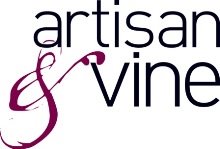
The final onset of Summer seems to me a very good time to talk about the temperature at which wines should be served.
Let’s start with talking about why it makes a difference to serve wine at the right temperature and why the right temperature is different for different wines.
1. Our sense of smell operates on the perception of vapours. Red wines generally have a higher molecular weight than white wines, and so they need warmer temperatures for their aromatic vapours to be released. In general, the darker the colour of a wine, the heavier its weight, and the warmer it should be served.
2. Our perception of tannins are effected by temperature too. In general, the colder a wine is served, the more its tannins will be exposed; the warmer a wine is served, the softer its tannins may be perceived. For mature, soft tannins like those present in a Burgundian Pinot Noir, serving wine a little colder will show off the fabulously refined tannins better than ‘smoothing them over’ with warm serving temperature.
3. Sweeter wines are generally served better cold. The coldness emphasises the acidity, which is needed to balance the sweetness in the wine for freshness rather than syrupy-ness.
So what is the summation?
Sweet wines should be served between 4 and 7 degrees Celsius. Dry whites between 6 and 11. Very fine white wines (best Burgundy, German, Australian and Californian whites) between 10 an 12 degrees Celsius. Light reds should be served between 10 and 14 degrees. Heavier reds should be served between 14 and 18 degrees.
Now, if you get an ice bucket with your red wine this summer: you’ll know why!
Image: glasses lined up and ready to be drunk at artisan & vine
 The final onset of Summer seems to me a very good time to talk about the temperature at which wines should be served.
The final onset of Summer seems to me a very good time to talk about the temperature at which wines should be served.















